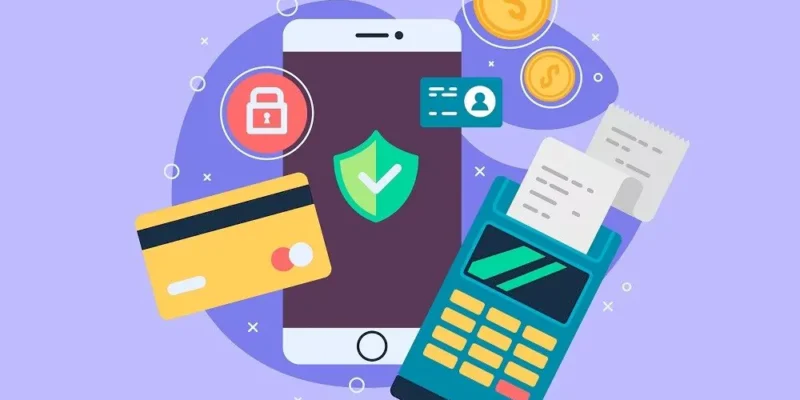The pandemic was one of those extreme events that mark generations: almost two years have passed of meetings and postponed plans, mediated by a series of precautions, fears and uncertainties. Vaccination coverage and the receding waves of infection have made it possible to resume personal contact. Looking back, despite all the difficulties imposed by this difficult period, the microeconomic agenda has moved forward, transforming the credit market and financial services. To this agenda, we must add the technological vector and behavioral change. In this article, I list some of these transformations:

1. Advances in credit discipline. Credit discipline is one of the pillars of a healthy and thriving economy. At the heart of the relationship between lenders and borrowers are the credit bureaus, which are essentially in business. For many years, the sector's best-known delivery was products using a database of people who had been denied credit. The evolution of information systems, combined with regulatory developments, has allowed credit bureaus to create increasingly sophisticated models for predicting credit behavior. The delinquency data that has been acquired since 2019 is important because it represents an additional source of information. However, the contribution of this database goes much further, as it encourages consumers to pay on time. If before the main incentive for registering people with bad credit was to avoid being registered, now the incentive is to create a history of being a good payer, thus obtaining better credit conditions with their reputation.
Consumers are increasingly aware of this and those who follow the credit ecosystem closely have been monitoring the degree to which Brazilians are aware of these new developments. Some results have already been discussed in this space, revealing a high percentage of consumers who know about and consult credit scores. The most recent survey of the credit bureau sector also investigated knowledge of the new Positive Registry, which was sanctioned three years ago this month. The results show that nine out of ten consumers have at least heard of the CP and seven out of ten perceive this instrument as a good thing when looking for credit.
2. The invisible have a first and last name. The first transformation took place before the pandemic, but it has matured over this period: the new Positive Registry. Since it came into operation, this instrument has evolved over the last three years with the receipt of payment information from new sectors. On an individual level, a survey by the Central Bank showed that the CP is delivering what it promised: lower credit costs for consumers. Collectively, the information sent by companies operating outside the financial sector has given visibility to thousands of consumers who were previously invisible to the credit market.
Recently, the National Association of Credit Bureaus (ANBC) reported that more than 12 million consumers, including individuals and companies, now have information available for credit analysis after the entry of data from the telecommunications sector. Even without a history of relationships with the financial system, these consumers can now be assessed on the basis of their history of paying telephone bills. The bureaus are already working to receive information from other sectors, such as energy, sanitation and gas, in order to further increase the visibility of good payers and unlock credit for consumption and the development of new businesses.
3. PIX: payments, transfers... and credit. Launched in November 2020, the first year of the health crisis, PIX was quickly adopted by consumers and companies. The system allows instant and free transfers to individuals, at any time of the day and any day of the week. The practicality of PIX as a means of payment has acted as a gateway to financial inclusion: data from the Central Bank shows that 17 million Brazilians with no record of using TED transfers have started making transfers with the new method. As a result of the creation of the PIX, financial institutions started offering the PIX Parcelado. This method allows the seller to receive funds instantly and the buyer to pay in more than one installment, either using their credit card limit or generating a personal loan. This is an additional option for the consumer, with the - always important - caveat that you have to evaluate the interest conditions, i.e. the cost of using the installment plan.
4. Financial life in the palm of your hand. Care to prevent the spread of viruses has prioritized virtual services, including financial services, leading governments and private companies to invest in digitization. Data from FEBRABAN's Technology Survey show that banks' investment in technology - including cybersecurity, artificial intelligence, 5G, cloud e big data - went from R$ 8.3 billion in 2019 to R$ 11.3 billion last year. An interesting statistic is a direct reflection of the digital priority: according to the Central Bank, the number of ATMs in Brazil is falling: from 168,000 in 2020 to 135,000 in 2021.
The changes continue. Other ongoing changes can be mentioned. The attention given to MSEs in tackling the pandemic is still echoed in the credit data. The sum of resources lent to the small business segment is growing at much higher rates than the average. Government support programs for the segment have been made permanent. It is also worth mentioning the growing importance of the environmental agenda and the new analysis criteria which, in both the credit and capital markets, have been guiding the targeting of resources.
It is true that these issues were already in place before the pandemic, but they have matured over the last few years, improving the credit environment. However, there is still room for progress: the reduction of the high spread This includes greater legal certainty for lenders, increased competition and a continuous process of financial education, starting with children and young people, so that the discipline of credit can promote its expansion on a secure basis.
Thanks for reading! Access other content at ANBC website.
By: Elias Sfeir President of ANBC & Member of the Climate Council of the City of São Paulo & Certified Advisor




